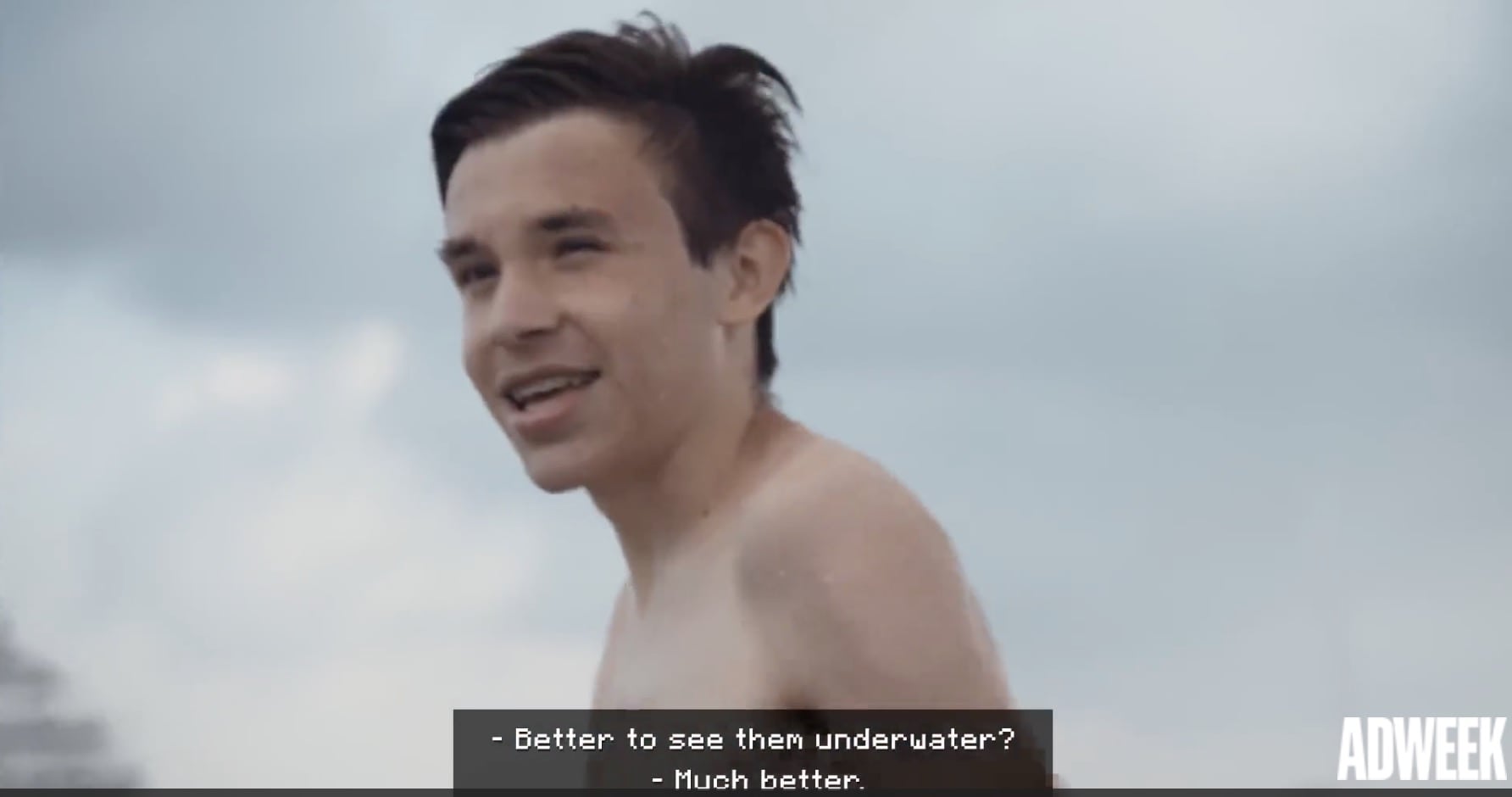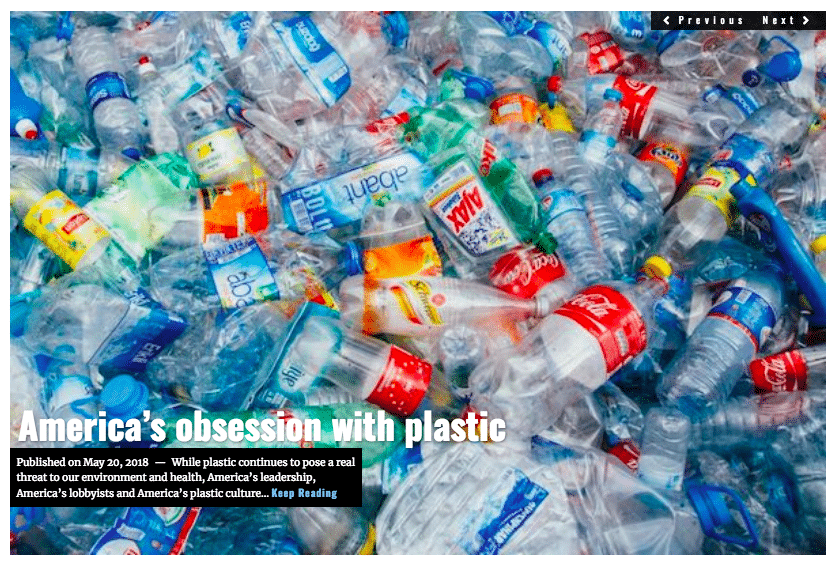With ocean temperatures and acidity rising, many of the world’s coral reefs are being wiped out. From combat veterans to scientists to video gamers, many are looking for innovative ways to build stronger reefs.
For years the world’s coral reefs, home to a quarter of all marine species, have been in decline, being wiped out by rising sea temperatures and increased acidity due to the massive absorption of humankind’s CO2 emissions by the ocean. Then there’s all kinds of pollution, including that caused by our obsession with and reliance upon plastics. Since the 1980s, approximately half of the oceans’ coral have disappeared, and it’s only getting worse. The National Oceanic and Atmospheric Administration (NOAA) has declared significant bleaching events for the last three years.
Yet, there may be some hope. Science, technology and the grit and determination of combat veteran divers are being deployed to fight back.
One Team, One Fight
Enter FORCE BLUE, a nonprofit organization that provides “mission therapy” for former combat divers and Special Operations (SOF) veterans — “individuals in whom governments around the world have invested millions to create the best possible underwater and maritime operators — by retraining, retooling and deploying them on missions of conservation, preservation and restoration.” Force Blue’s stated mission: “To unite the community of Special Operations veterans with the world of marine conservation for the betterment of both.”
Force Blue began with U.S. RECON Marine Sergeant Rudy Reyes, a combat diver who experienced a catharsis during his first diving trip in the Cayman Islands along with friends (and co-founders) Jim Ritterhoff and Keith Sahm, skilled reef divers. For Reyes, who had struggled with PTS and depression since returning home from multiple tours in Iraq and Afghanistan, “the experience was nothing short of life changing.” Force Blue’s story would emerge as a program that brings together combat divers from all branches of service, to work with marine scientists, conservationists and journalists to help the marine environment, which includes tackling the problem of the world’s disappearing coral reefs.
"This is a Warrior/Samaritan mission. Please join us." — FORCE BLUE Co-Founder, Recon Marine Veteran, @realRudyReyes
Visit https://t.co/2HzZowxnyl and BE A FORCE MULTIPLIER. Help us. Help vets. Help the planet. pic.twitter.com/IxWFaHm2t9
— FORCE BLUE (@forceblueteam) June 25, 2018
Force Blue’s “One team. One fight” attitude has included its first project in April 2017 to rebuild and rehabilitate the reefs in the Cayman Islands.
According to Mission Blue, the team engaged in 130 hours of classroom training and learning about preserving coral reefs, while working with Cayman’s Coral Nursery Recovery Program, to plant viable coral fragments onto damaged coral reefs.
US veterans @forceblueteam are finding a new mission to restore Cayman’s #coralreefs! https://t.co/B9INV241Ua @ecochic4life #oceanoptimism pic.twitter.com/gNjcUjytTD
— Mission Blue (@MissionBlue) June 22, 2017
This June, with the help of non-profit conservation organization SECORE International (SExual COral REproduction), the team learned about the ins and outs of Sexual Coral Reproduction.
AROUSED. Learning all the ins and outs of Sexual Coral Reproduction with our friends from @SECORE_coral. BE A FORCE MULTIPLIER! Sponsor a Special Ops Vet @ https://t.co/2HzZowOYpT pic.twitter.com/Vo5krVIqQT
— FORCE BLUE (@forceblueteam) June 15, 2018
[Read here to learn more about coral reproduction from SECORE).
Force Blue’s “Mission Therapy” states that it is “Harkening back to the days of Jacques Cousteau and the French Commando frogmen he trained … creating a modern-day cadre of elite combat veterans with the aptitude and ability to achieve great things on the conservation front.”
Real world true grit meets science at Force Blue to rebuild and rehabilitate coral reefs. But how can the proverbial “couch potato” help?
Gamers Build Reefs
A unique initiative has allowed video gamers to join in the mission to save coral reefs. The Coral Crafters project, a partnership between the makers of Minecraft and advertising agency McCann, pits some of Minecraft’s “most influential players” in a competition to design underwater sculptures within the game, that are then brought to life. The winning sculptures are built, then anchored to the sea floor off the coast of Cozumel, Mexico, an area suffering from coral depletion. The structures are specially designed to facilitate the growth of coral with the aid of bitrock (known as “seament”).
McCann and Minecraft also partnered with The Nature Conservancy, a nonprofit that farms and plants coral in the Caribbean, so that whenever a player builds coral or buys a custom-made pack from the organization within the game, it triggers automatic donations from Minecraft and Microsoft to the charity.
![Image [Minecraft Coral Crafters project screen capture][Adweek]](https://limacharlienews.com/wp-content/uploads/2018/06/Screen-Shot-2018-06-28-at-7.41.20-PM.jpg)


It’s worth watching the full video.
Science!
In December, Australia’s environmental ministry granted a fund of $1.7m to set up large solar-powered turbines to suck up cold water from the depths and redirect it onto the reefs. However, the environmental ministry was careful to clarify that the technology was not going to be sufficient to save the reefs, and scientists have noted that the colder water will absorb more carbon and become more acidic than the warmer water it will replace.
Some researchers are attempting to alter the coral instead of the water surrounding it. The Hawaii Institute of Marine Biology has been selectively breeding coral and has succeeded in making it more resistant to heat.
“We can train corals to be better. But we have to do this now, and we have to be very proactive,” Ruth Gates, Ph.D., the director of the project, said.
Their method is to expose coral to high temperatures, and then breed the survivors. This isn’t just a form of accelerated natural selection; coral which has been exposed to high temperatures has been shown to be more resistant to future heat waves, and the researchers hope that the offspring will accumulate their parents’ hardy qualities.

Another technique being pursued by the Australian Institute of Marine Science is pushing the coral to cross-breed. The resulting coral have not been uniformly resilient, but some of their research has been successful.
One difficulty in researching coral is the infrequency of their spawning, the period in which they release both eggs and sperm. Coral can spawn as little as once a year, giving researchers a very narrow window. The Florida Aquarium in Tampa Bay is experimenting with directing corals’ reproductive cycle by using staggered lighting and temperature patterns to fool the coral into making more attempts to breed. In addition to creating research opportunities, the breeding is enabling the aquarium to rebuild Florida’s coastal reefs by directly transplanting coral which they succeeded in growing.

Another approach is to target the algae which coat the coral. When algae is distressed by high temperatures, the microorganisms release oxidants which are toxic to the coral. The coral respond defensively, and expel the algae from their surfaces. This is the process of bleaching, and the white appearance of the coral is due to the absence of algae. Ordinarily, coral are reliant on the algae for food, and without them the coral starve.
The Australian Institute for Marine Science is attempting to selectively breed such algae, utilizing the same technique of subjecting the algae to heat and higher levels of acidification, and breeding the survivors. The institute succeeded, but noticed that the algae lost its acquired durability upon the colonization of coral.
In spite of this hurdle, researchers at the University of Miami have noticed that coral which have been subjected to bleaching tend to favor more resilient algae.
A few research labs have started to make significant progress in DNA engineering the coral to have higher heat thresholds. Dr. Christian R. Voolstra of King Abdullah University of Science and Technology and his team have been taking advantage of the advances in DNA science to insert genetic material into the Acropora millepora coral. Dr. Voolstra has predicted that the ability to edit the genomes of coral to be more heat-resistant is about five years away.
Most recently, studies have increased over certain strains of naturally occurring coral that thrive in the Middle East and are more resilient to heat. Corals in the Gulf of Aqaba, a narrow waterway at the northernmost tip of the Red Sea, bordered by Israel, Egypt, Jordan and Saudi Arabia, have shown incredible resistance to warmer ocean temperatures. Efforts are being made to breed similar corals.

Along with this new progress, however, come questions of the ethics of human modification in nature, and how new technology might be distracting us from the project of reducing carbon dioxide emissions.
Still, the hope that DNA engineering provides is that the oceans’ coral may still be saved despite the irrevocable heat changes that have already occurred.
LIMA CHARLIE NEWS
Lima Charlie World provides global news, featuring insight & analysis by military veterans, intelligence professionals and foreign policy experts Worldwide.
For up-to-date news, please follow us on twitter at @LimaCharlieNews

![Image Combat Veterans, Scientists, Gamers work to save the world's dying coral reefs [Lima Charlie News]](https://limacharlienews.com/wp-content/uploads/2018/06/Combat-Veterans-Scientists-Gamers-work-to-save-the-worlds-dying-coral-reefs.jpg)





![Image Russia's New Arctic Military Bases [Lima Charlie News][Image: ITAR-TASS Photo Agency]](https://limacharlienews.com/wp-content/uploads/2017/04/Russia-Arctic-bases-main-480x384.jpg)
![Africa’s Elections | In Malawi, food, land, corruption dominate [Lima Charlie News]](https://limacharlienews.com/wp-content/uploads/2019/06/Malawi-election-Food-land-corruption-480x384.jpg)
![Image America's obsession with plastic [Lima Charlie News]](https://limacharlienews.com/wp-content/uploads/2018/05/Americas-obsession-with-plastic-480x384.jpg)
![Image Fracking, BREXIT and an oil and gas shale bonanza [Lima Charlie News][Image: Ben Stansall/AFP]](https://limacharlienews.com/wp-content/uploads/2018/04/Fracking-BREXIT-and-an-oil-and-gas-shale-bonanza-480x384.png)
![Image Deep sea mining raises critical issues for the International Seabed Authority [Lima Charlie News]](https://limacharlienews.com/wp-content/uploads/2018/03/Deep-sea-mining-raises-critical-issues-for-the-International-Seabed-Authority-480x384.jpg)
![Image Environmental activist assassination exposes corruption in Honduras [Lima Charlie News]](https://limacharlienews.com/wp-content/uploads/2018/03/Environmental-activist-assassination-exposes-corruption-in-Honduras-Berta-Caceres-480x384.png)

